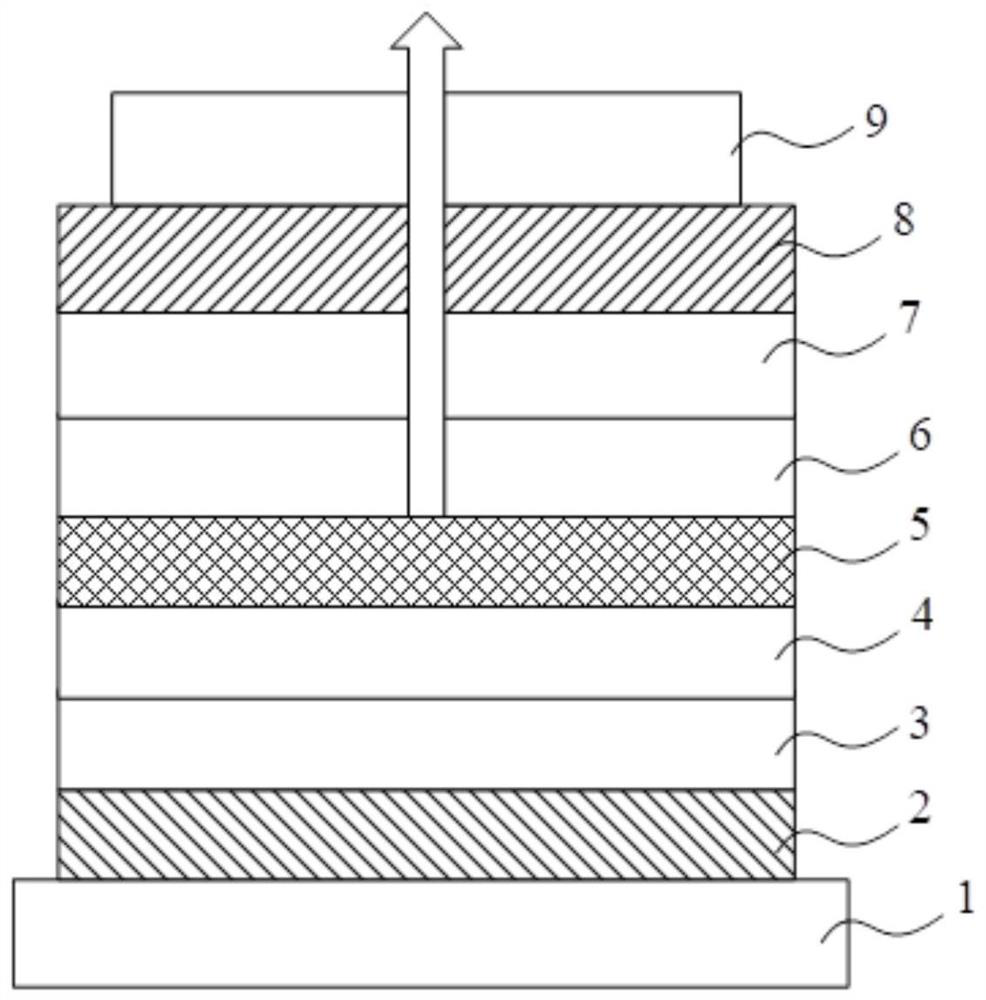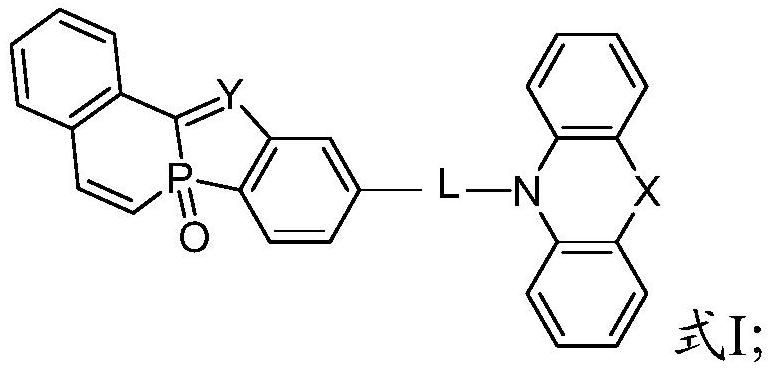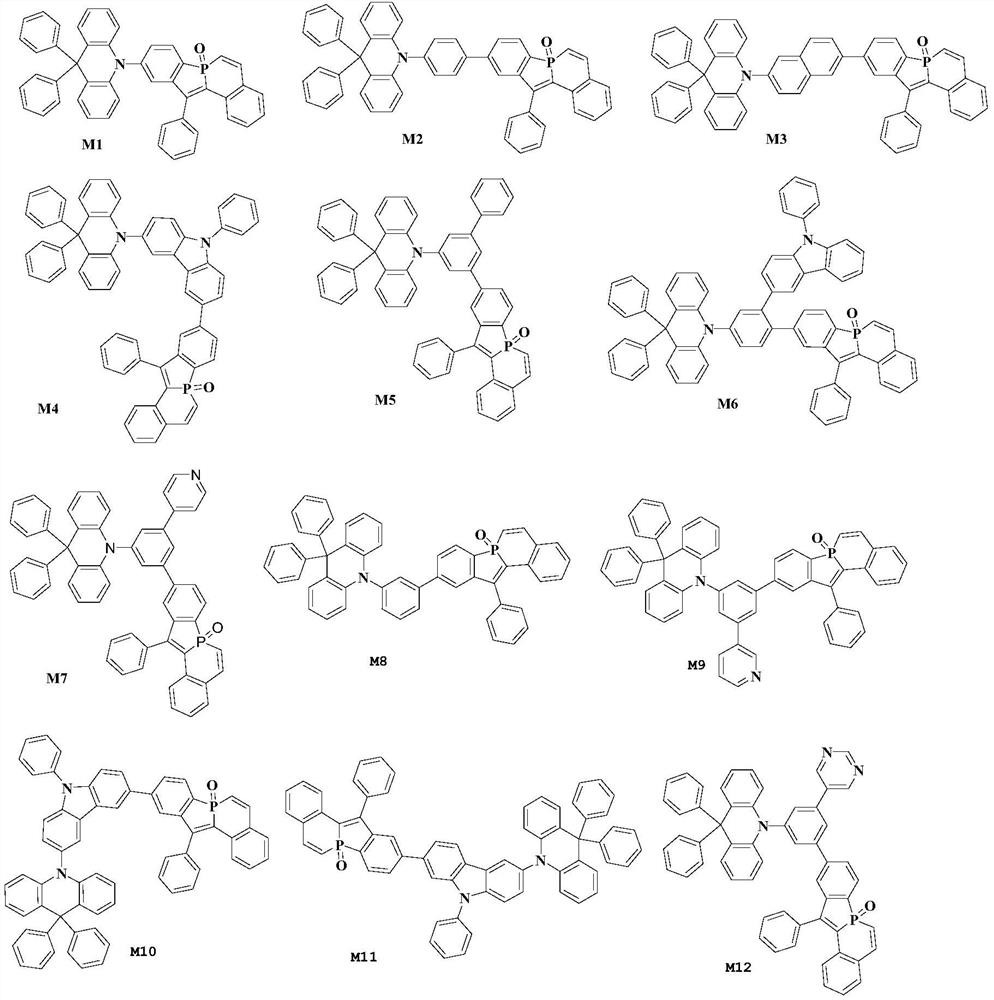Organic electroluminescent compound and application thereof
A luminescent and compound technology, applied in the field of organic electroluminescent compounds, can solve problems such as inability to meet the application requirements of luminescent materials, achieve excellent carrier transport performance, improve luminous efficiency, and prolong working life.
- Summary
- Abstract
- Description
- Claims
- Application Information
AI Technical Summary
Problems solved by technology
Method used
Image
Examples
Embodiment 1
[0049] Example 1 Compound M1
[0050]
[0051] The preparation method of this organic compound M1 comprises the steps:
[0052]
[0053] Compound M1-1 (4mmol) and bis(triphenylphosphine)palladium dichloride Pd(PPh 3 ) 2 Cl 2 (0.17mmol) was added to a three-necked flask, stirred and dissolved with 300mL N,N-dimethylformamide (DMF), under nitrogen protection, at room temperature, slowly added liquid bromine (2mmol) dropwise, the reaction solution was stirred at room temperature for 2h, pumped After filtration, the filter cake was recrystallized with ethanol to obtain a solid, namely intermediate M1-2.
[0054]
[0055] In a 250mL round bottom flask, M1-2 (12mmol) obtained in step (1), compound P1 (12mmol) and Na 2 CO 3 (80mmol) were added to toluene / absolute ethanol EtOH / H 2 O (75 / 25 / 50, mL) solvent, to form a mixed solution, and then tetrakis (triphenylphosphine) palladium Pd (PPh 3 ) 4 (0.48mmol) was added to the above mixed solution, and the obtained intermed...
Embodiment 2
[0058] Example 2 Compound M2
[0059]
[0060] The preparation method of this organic compound M2 comprises the steps:
[0061]
[0062] In a 250mL round bottom flask, M1-2 (12mmol, the same preparation method as in Example 1), compound P2 (12mmol) and Na 2 CO 3 (80mmol) were added to toluene / EtOH / H 2 In O (75 / 25 / 50, mL) solvent, a mixed solution was formed, and then Pd(PPh 3 ) 4 (0.48mmol) was added to the above mixed solution, and the obtained intermediate was refluxed for 24h under a nitrogen atmosphere, cooled to room temperature, added to water, filtered through a diatomaceous earth pad, extracted with dichloromethane, washed with water, and After drying over anhydrous magnesium sulfate, filtration and evaporation, the crude product was purified by silica gel column chromatography to obtain intermediate product M2-1.
[0063]
[0064] In a 250mL round bottom flask, the intermediate product M2-1 (12mmol) obtained in step (2), compound P1 (12mmol) and Na 2 CO...
Embodiment 3
[0067] Example 3 Compound M3
[0068]
[0069] The preparation method of this organic compound M3 comprises the steps:
[0070]
[0071] In a 250mL round bottom flask, M1-2 (12mmol, the preparation method is the same as in Example 1), compound P3 (12mmol) and Na 2 CO 3 (80mmol) were added to toluene / EtOH / H 2 In O (75 / 25 / 50, mL) solvent, a mixed solution was formed, and then Pd(PPh 3 ) 4 (0.48mmol) was added to the above mixed solution, and the obtained intermediate was refluxed for 24h under a nitrogen atmosphere, cooled to room temperature, added to water, filtered through a diatomaceous earth pad, extracted with dichloromethane, washed with water, and After drying over anhydrous magnesium sulfate, filtration and evaporation, the crude product was purified by silica gel column chromatography to obtain intermediate product M3-1.
[0072]
[0073] In a 250mL round bottom flask, the intermediate product M3-1 (12mmol) obtained in step (2), compound P1 (12mmol) and N...
PUM
| Property | Measurement | Unit |
|---|---|---|
| internal quantum efficiency | aaaaa | aaaaa |
| external quantum efficiency | aaaaa | aaaaa |
Abstract
Description
Claims
Application Information
 Login to View More
Login to View More - R&D
- Intellectual Property
- Life Sciences
- Materials
- Tech Scout
- Unparalleled Data Quality
- Higher Quality Content
- 60% Fewer Hallucinations
Browse by: Latest US Patents, China's latest patents, Technical Efficacy Thesaurus, Application Domain, Technology Topic, Popular Technical Reports.
© 2025 PatSnap. All rights reserved.Legal|Privacy policy|Modern Slavery Act Transparency Statement|Sitemap|About US| Contact US: help@patsnap.com



